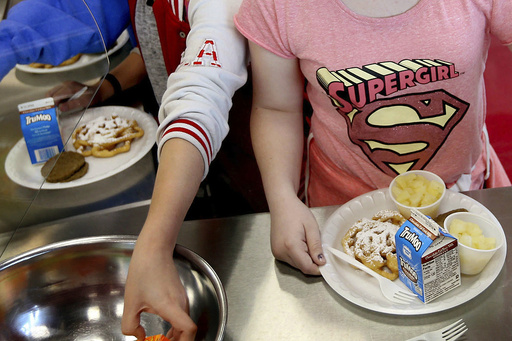
NEW YORK — The U.S. Department of Agriculture has declared that from the 2027 school year onward, students who qualify for free or reduced-price meals will not incur processing fees when utilizing cashless payment systems.
Currently, many school districts partner with processing firms to facilitate cashless transactions for families. However, these companies often impose “processing fees” on each transaction. According to existing regulations, students eligible for reduced-price meals can only be charged a maximum of 30 cents for breakfast and 40 cents for lunch. Unfortunately, with the additional processing fees, families may find themselves paying significantly more—up to tenfold. Reports from the Consumer Financial Protection Bureau indicate that some processing firms charge fees ranging from $3.25 to around 4% to 5% for every transaction.
For lower-income families, loading large amounts of money into accounts can be challenging, often leading to frequent processing fees that accumulate. Indeed, families qualifying for free or reduced lunch can pay as much as 60 cents for every dollar spent in fees on electronic payments for school meals.
The USDA’s new policy aims to alleviate costs for families earning less than 185% of the federal poverty line, approximately $57,720 annually for a family of four. As Agriculture Secretary Tom Vilsack stated, “USDA and schools across America share the same goal of nourishing schoolchildren and providing the resources they need to thrive.” He also emphasized that while eliminating these fees marks significant progress, the ultimate aim is to ensure every child has access to free, healthy meals. The USDA plans to continue working with Congress to achieve this objective.
This decision by the department comes in response to a CFPB report highlighting that online meal payment systems disproportionately impact low-income families, collectively costing them over $100 million every year. Although the USDA has required school districts to inform families about their payment options since 2017, parents often find it burdensome to pay with cash or checks to avoid fees.
Joanna Roa, a library specialist at Clemson University, expressed her frustration regarding the inconvenience of processing fees for her two children. After encountering a $3.25 fee for lunch account transactions, she and her husband decided to switch to packed lunches instead. “I expected a minor dollar amount,” Roa explained. “But $3.25 per transaction, especially in rural South Carolina where living costs and wages are lower, is excessive.”
Roa mentioned that daily meal prep for her kids became a time-consuming task for the busy parents. Fortunately, her school district had recently provided free lunches, but she acknowledged that this could change at any moment.
The CFPB’s review of 300 major public school districts in the U.S. revealed that 87% of these districts collaborate with payment processors. Such companies charge an average of $2.37 or 4.4% per transaction when adding funds to a student’s lunch account.
Though payment processing companies argue that school districts can negotiate fees and terms, the CFPB noted that the intricate structures of these firms may limit competition, discouraging districts from negotiating. The market is chiefly controlled by three companies—MySchoolBucks, SchoolCafe, and LINQ Connect—making it challenging for families to avoid detrimental practices might violate federal consumer protection laws, as highlighted by the agency.
